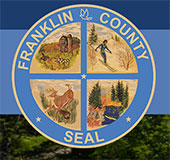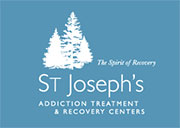Franklin County New York Addiction Hotline
Franklin County NY Substance Abuse Treatment Hotline
Substance Abuse Statistics Franklin County New York
Substance abuse is a significant issue in Franklin County, New York, with various indicators demonstrating the scope of the problem[1]. The county has experienced a steady increase in drug and alcohol use in recent years, leading to a rise in overdose deaths[2]. According to the Columbus & Franklin County Addiction Plan, the county saw 825 overdose deaths in 2021, with nearly 90% of deaths involving fentanyl[3]. These statistics highlight the urgent need for effective prevention and treatment programs to address substance abuse in Franklin County.
Data from the National Survey on Drug Use and Health (NSDUH) provides up-to-date information on tobacco, alcohol, and drug use in Franklin County[4]. The survey found that alcohol use among adults in the county is relatively high, with 60% of adults reporting past-month use[5]. Additionally, the Columbus and Franklin County Addiction Plan reports that the county has seen a significant increase in opioid use in recent years[6]. These statistics suggest that alcohol and opioid abuse are significant problems in Franklin County, requiring targeted interventions to address the issue.
The impact of substance abuse on Franklin County communities is far-reaching, affecting individuals, families, and the broader community[6]. Substance abuse can lead to a range of negative consequences, including: – Increased risk of accidents and injuries – Health problems, including chronic disease and mental health issues – Financial strain and employment difficulties – Disruption of family and social relationships – Criminal activity and incarceration. The plan includes strategies such as increasing access to treatment and support services, promoting harm reduction practices, and addressing the root causes of substance abuse in the community. By implementing these strategies, Franklin County can work towards reducing the negative impact of substance abuse on its communities.
References
1. Franklin County Indicators For Tracking Prevention Agenda …. from www.health.ny.gov
2. Franklin County overdose deaths: Experts offer insights on …. from www.dispatch.com
3. Drug overdose crisis: Franklin County 2021 deaths …. from www.dispatch.com
4. National Survey on Drug Use and Health. from nsduhweb.rti.org/
5. Alcohol and Drug Use Data – NYC Health. from www.nyc.gov

Franklin County New York Addiction Treatment Resources

Franklin County New York Government Substance-Abuse Resources
Franklin County New York Government Substance-Abuse Resources. Community Services oversees the following services and activities: Development of a comprehensive county plan for mental health, developmental disability and substance use disorder services. Allocation of funding to local mental hygiene contractual agencies based on community priorities, treatment outcomes and program performance. Provide fiscal oversight and technical assistance to contractual agencies. Coordination with the NYS Office of Addiction Services and Supports (OASAS), Office of Mental Health (OMH), and Office for People with Developmental Disabilities (OPWDD
Franklin County New York Alcoholics Anonymous District 42
Franklin County New York Alcoholics Anonymous District 42 A.A. 12 Steps We admitted we were powerless over alcohol and our lives were unmanageable. Our common welfare comes first; personal recovery depends on A. A. unity. The Concepts are an interpretation of A.A.’s world service structure as it emerged through A.A.’s early history and experience. A. A. meetings are held throughout District 42 on all days of the week;

St Joseph’s’ Franklin County New York Outpatient Addiction Treatment & Recovery
St Joseph’s’ Franklin County New York Outpatient Addiction Treatment & Recovery Services. Our outpatient addiction treatment admissions process is completely confidential. Prospective clients may call us on their own, or be referred by family, physicians, employers, health care agencies, school personnel, legal professionals, insurance companies, and or, private practitioners. Substance use disorder treatment is covered by most third-party payers, health plans, and Medicaid. However, in the event that a health care plan does not cover this level of care, a self-pay arrangement can be discussed and implemented based upon need.

